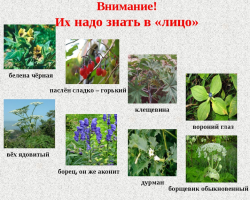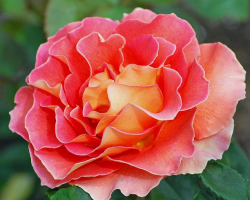The people are called Kochiya a Bassia or summer cypress. Culture has spread to us from China.
Content
The botanist Koch brought her to Europe only in the XVII century. This was the receipt of the name of culture. More information on how to grow Kochia in the garden will be described in this article.
Description of the Kochiy plant
- The plant can be annual or perennial based on the climate of the region. It is characterized by an extensive crown. The leaf plates are small, light green. In the fall, they become crimson. Visually, Kochiya resembles coniferous culture. That is why it is called summer cypress.
- Plant branches can be used in manufacturing venika. The culture is easily cut, and does not require special care. Often, cochia is grown as a decorative shrub. If necessary, it can be given by any figure.
- If you properly care for plants, their maximum height is 1 m.

Varieties
There are several types of cochia:
- Panicem. There are two varieties - hair -shaped and Childs. The first species is characterized by leaves of saturated green shade. The height of the bush is 1 m. Kochiya Childs is compact. The maximum height is 0.6 m.
- Six -flowered. It is characterized by curly short hairs, which are located over the entire surface of the stem. The height of the bushes is from 60 to 80 cm.
- Thick -flowered. This species differs in highness (up to 1.3 m). The shoots are located horizontally. It differs in that the flowers have long hairs of white color. Therefore, the shoots look more pubescent.
- Creeping. It is a perennial. Often it is grown in the creation of mountaineering and rockeries. Shoots are laid down on the ground, and bend a little in the upper part. Height is about 10-50 cm. There are silky hairs on the surface of annual shoots. After they become smooth. The leaves resemble the shape of the thread, and have a fluffy surface.
Common varieties
In personal plots, there is often a cochy of several varieties:
- Summer cypress. The bushes are high, and have an oval-eliminated structure. In summer, they are painted in a bright green tint, and in the fall-crimson-red.
- Sultan. The bushes are low, up to 60 cm. They have a rounded shape. In autumn, the leaves become red.
- Green Lece. The bushes are elongated, with a rich green tint.
- Green Forest. The shoots are very branched, light green. Bushes of the correct oval shape, and their height is up to 1 m.
- Trichofill. Plant height up to 80 cm. In the summer period of time, the leaves are painted in an emerald shade, and in the fall they become red.
- Burning bush. The bushes grow rapidly, and differ in small leaves.

Features of growing
Cochia is growing, both seedlings and seeds. Read more about all methods later.
How to prepare seeds?
- Cochia seeds differ in the shape of compact stars. 1 g contains about 1.2 thousand seeds. Before proceeding with landing, stratification needs to be carried out.
- For this, the seeds are mixed with wet peat soil. After they are put in a dark and cool place, and withstand for about 30 days.
How to grow seedlings?
- Sowing seeds should be carried out in compact containers. They need to be filled with nutrient soil, which passes the air well. Seeds should be evenly distributed on the surface of the soil, and pressed a little. After pour the soil and cover with a glass or film with a container.
- In order for the seeds of the cochia to sprout well, they should be well lit. If the air temperature is in the range of +18 ° C, germination will take no more than 10 days. It should be noted that the seeds collected recently are 100%likely.
- If you buy them in the store, the germination will be slightly lower (not more than 80%). When most of the seeds rush, gradually remove the shelter. You need to ventilate the plants. Try to increase ventilation time every day, and after 5 days the shelter is completely removed.
- When in young plants it is formed 2-3 pairs of leaves, should be planted in separate containers of several pieces. The optimal width of containers - 15 cm. If in the spring frosts no longer return, landing is carried out immediately to the garden. Plants that have undergone a dive must be fed. It is necessary to proceed with the procedure 14 days after taking seeds. It is recommended to use mineral fertilizers.

Where to plant?
- It is very important to choose the right place for landing. Kochiya prefers sunny areas that are well illuminated.
- Some gardeners prefer to land in partial shade. However, this will lead to stretching the bushes, and they will not acquire such dense structures.
Kochia landing in open ground: Rules
- Kochiya needs to be protected from cold and shadow. Not suitable for planting a lowland or a site where groundwater is close. It is better to choose places where fertile soil prevails. It can be neutral or slightly acidic. Make sure that the soil passes the air and water to the root system well.
- As soon as the risk of returning spring frost disappears, you can proceed to transplant seedlings into open ground. The distance between the bushes should be about 0.3-0.5 m. In this case, the seedlings should be strong, and have a height of at least 15 cm. The transplant is carried out with the earthen lump. Pits should be the same size as the roots. The holes need to be well watered with warm water, and then exceed the plant in them. Next, you need to squeeze the ground.
- If you sowed seeds in peat pots, transplanting into open ground is carried out in them. The bushes will quickly take root, and will also differ in rapid growth rate.

How to plant cochia seeds in open ground?
- As mentioned earlier, you can sow seeds in the soil. This can be done in spring and autumn. Spring sowing is carried out in mid -May. If you carry out the procedure earlier, protect the planting with covering material. To accelerate germination, soak the seeds for 2-3 days in warm water. You can also process growth stimulants. Previously, the soil is dug and loosened.
- A mixture consisting of peat and sand must be scattered across the site. Distribute the seeds on the soil, and tamp your palm a bit. Seeds that germinate are growing better. After 7 days you will notice the first shoots. Snow sprouts must be removed.
- Autumn sowing is carried out in the winter. Seeds are distributed along with peat and sand. The soil should be a little frozen. Elives during autumn landing will appear only in the spring. When the bushes grow, they can be transplanted. The distance between them should be within 35 cm. If the landing is thick, the plants will develop poorly, while the emission of flowers will accelerate. Sowing with seeds in open ground is carried out only in those regions where a warm climate.
Features of the reproduction of cochia
- Kochiya propagates, often seeds. They are sown in late March. The seedlings of the plant are not tender enough. Therefore, it does not fade, even if the temperature decreases.
- In order for the Kochia to develop evenly, planting is carried out when the air temperature is in the range from +18 ° C to +20 ° C.
- Experienced gardeners prefer to sow the seeds in the greenhouse. When a certain place passes, a transplant is carried out to open ground.
Cochia flower care
It should be noted that Kochia does not require special care. However, the basic agricultural rules must be observed. More about them will be described later.
How to water?
- Kochia easily tolerates drought. If there is enough precipitation in your region, additional watering is not required. In the case of hot weather, for full development, you need to regularly water the bushes.
- Make sure that water does not stagnate in the soil. It will block development, and also reduce the decorative properties of the plant. As a result, the shrub may die.
Fertilizer
- With an interval of 10 days you need to make top dressing. Mineral fertilizers are used for this. Make sure that nitrogen is several times more than phosphorus and potassium. It is necessary to fertilize Kochiya by superphosphate, nitrate and chloride potassium.
- If you recently planted plants, their leaves can quickly acquire a red tint.

This can happen for various reasons, among which:
- lack of phosphorus in cool weather;
- landing was carried out earlier than the required time;
- the bushes did not harden.
In order to avoid redness of the leaves, it is necessary to feed superphosphate.
How to trim it correctly?
- Kochia easily reacts to trimming. The branches of the plant are quite thick, so the bushes can be given a different shape. After the haircut, the bushes will maintain their shape for a long time. To give summer cypress rounded shape and compactness, it is enough to pinch the upper branches.
- If another form is planned, when pruning should be applied sharp priest. After mineral fertilizers are introduced so that shrubs painlessly transferred this process. The formative haircut is carried out with an interval of several months.
- It is very important to carry out sanitary pruning. For this dry, sick and damaged branches are removed. The procedure is carried out in spring and autumn.

Additional stages of care
- It is very important to loosen the upper layer of soil so that oxygen penetrates better to the roots.
- Weeds should also be removed, which can cause pests.
Diseases and pests
- Kochiy is considered a very persistent plantTherefore, it is practically not affected by diseases. On the bushes, you can notice the signs of only the pest - a spider mite. It is characterized by a rapid rate of reproduction, so it can cause cypress severe damage. You can determine the presence of a spider mite by red or black dots that accumulate in the lower part of the leaves. In this case, the points move.
- You can fight the pest with insecticides. It can be Akarin and Fitoverm. Preparations have proven themselves well Neoron and Bitoxibacillin. If you do not have funds for chemicals, you can apply a bell of cyclamen tubers or soap -based solution.
- If your region has abundant rains, root rot may develop. In such cases, damaged bushes are uprooted. Healthy plants need to be treated with potassium mortar for prevention.
Using cochia in landscape design
- Kochiy is considered a very attractive decorative plant. Therefore, it is often planted to create landscape design. Often summer cypress is planted along flower beds, borders and paths. It looks harmonious against the background of green lawns. Suitable for decoration rocaries, mixborders and other flower beds.
- You can plant both individual plants and combine with other crops. It will look good in combination with compact roses, begonia, salvia and petunia. Florists often use Kochiya when creating winter bouquets with dried flowers. If you plan to create a green fence, choose venichnaya (panicem) Kochiy.
- Planting is carried out in several rows with a small shift. The distance between the bushes should be 20 cm, and between the rows - 15 cm. This type is suitable for complementing rocky compositions and alpine slides.
- Hair -shaped cochia is used as a tapeworm or for a hedge. Given that the leaves do not show off, the bushes look good against the background of snowdrifts. When spring comes, it is recommended to cut off old bushes and plant young plants. Cochia Childs will look good. This is the best option for creating a dense hedge. Plants are planted with a slight displacement. The distance between the bushes is 30 cm.

As you can see, there is nothing complicated in the cultivation of Kochia. Planting can be carried out both seedlings and seeds. The choice depends on the characteristics of your region. Care for plants is simple, so even gardeners-novice will be able to cope with growing.
Useful articles on the site:
- Juniper Blue
- Beautiful decorative shrubs
- Clematis flower
- Weaved rose
- Decorative honeysuckle is a kaprifol







